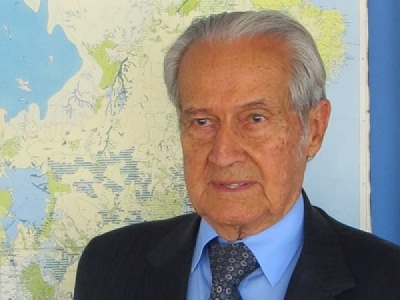
Posted on September 28, 2017
Colombian octogenarian Mariano Ospina-Hernandez (MBA 1951) is the resolute visionary behind an ambitious proposal to improve and expand the country’s transportation infrastructure. His foresight could open new possibilities for international commerce and travel by linking some of South America’s largest rivers.
“Our biggest problem in Colombia, as in most of our underdeveloped countries, is poverty,” states Ospina. “And one way to fight poverty is through engineering.” The son of former Colombian president Mariano Ospina Perez, Ospina is CEO of a charitable foundation that honors his father’s legacy by promoting economic development. Past experience in the construction and coffee industries and former postings as Colombia’s ambassador to West Germany, and CEO of the Agricultural Bank of Colombia, convinced Ospina that South America’s inadequate highway system—400,000 kilometers of highways versus 5 million in the US—is a significant barrier to economic growth.
His advocacy for developing a South American Riverways System to facilitate trade and transit in Colombia and neighboring countries dates to the mid-1990s, when he gathered a group of government officials, academics, and other interested parties at the American Academy of Arts and Sciences, to consider his proposal to create a transcontinental waterway that would comprise six major South American rivers (Amazon, Orinoco, Putumayo, Paraguay, Paraná, and La Plata).
Recent progress toward this end includes the exploration of international funding sources for the estimated $50 billion to $60 billion project and work to develop a feasibility study that is focused on the trunk line of the system, the Amazon-Putumayo-Pacific corridor.
With degrees in civil engineering from MIT and city planning from Harvard, in addition to his MBA, Ospina has never underestimated the task’s overall logistical, political, economic, and environmental complexities. “It’s taken us 20 years to get this far,” he observes, “and it will take at least another 20 to happen.”
Ospina says that fact-finding trips to China, Russia, and Germany to study successful river transport infrastructures have assured him that similar results can be realized in South America.





